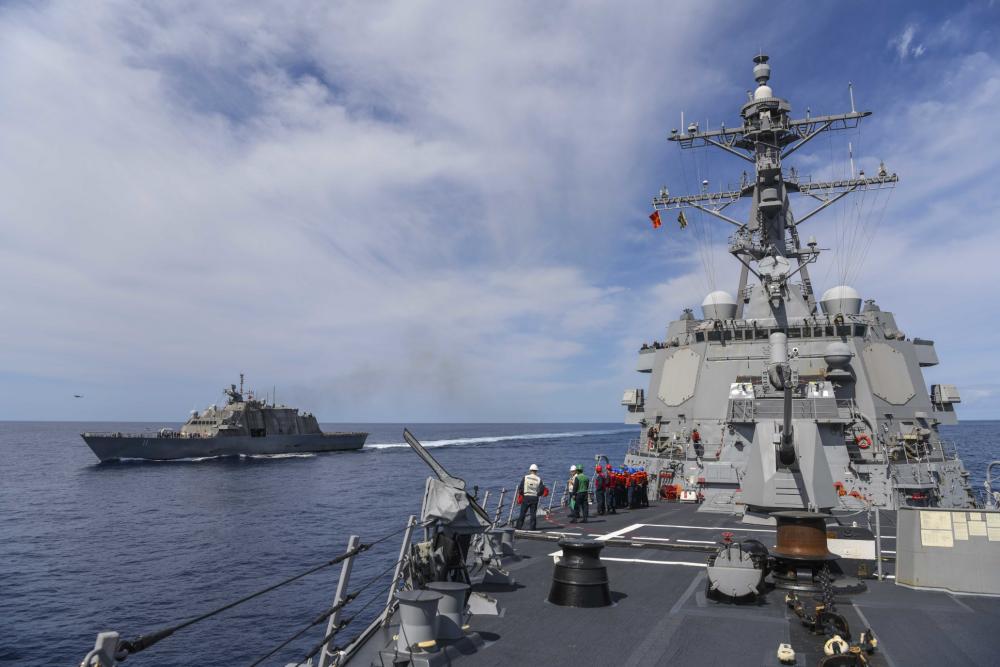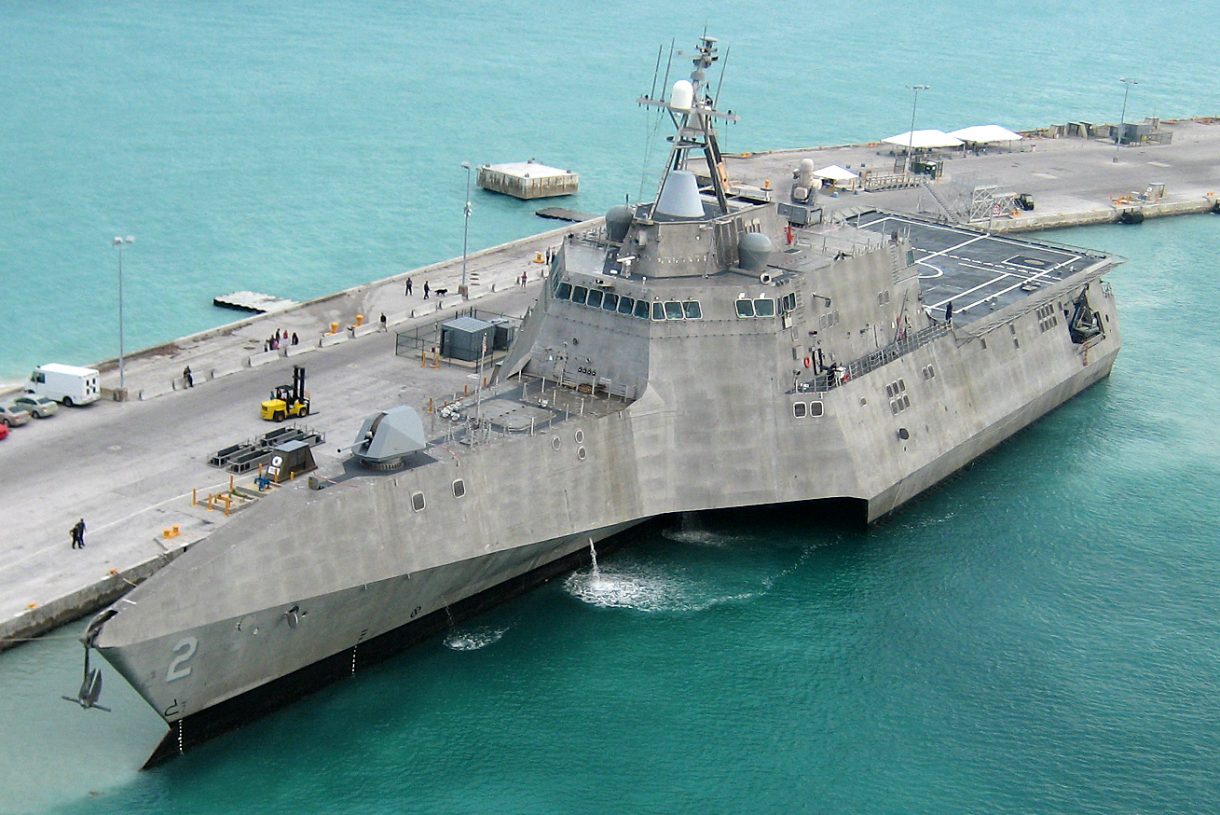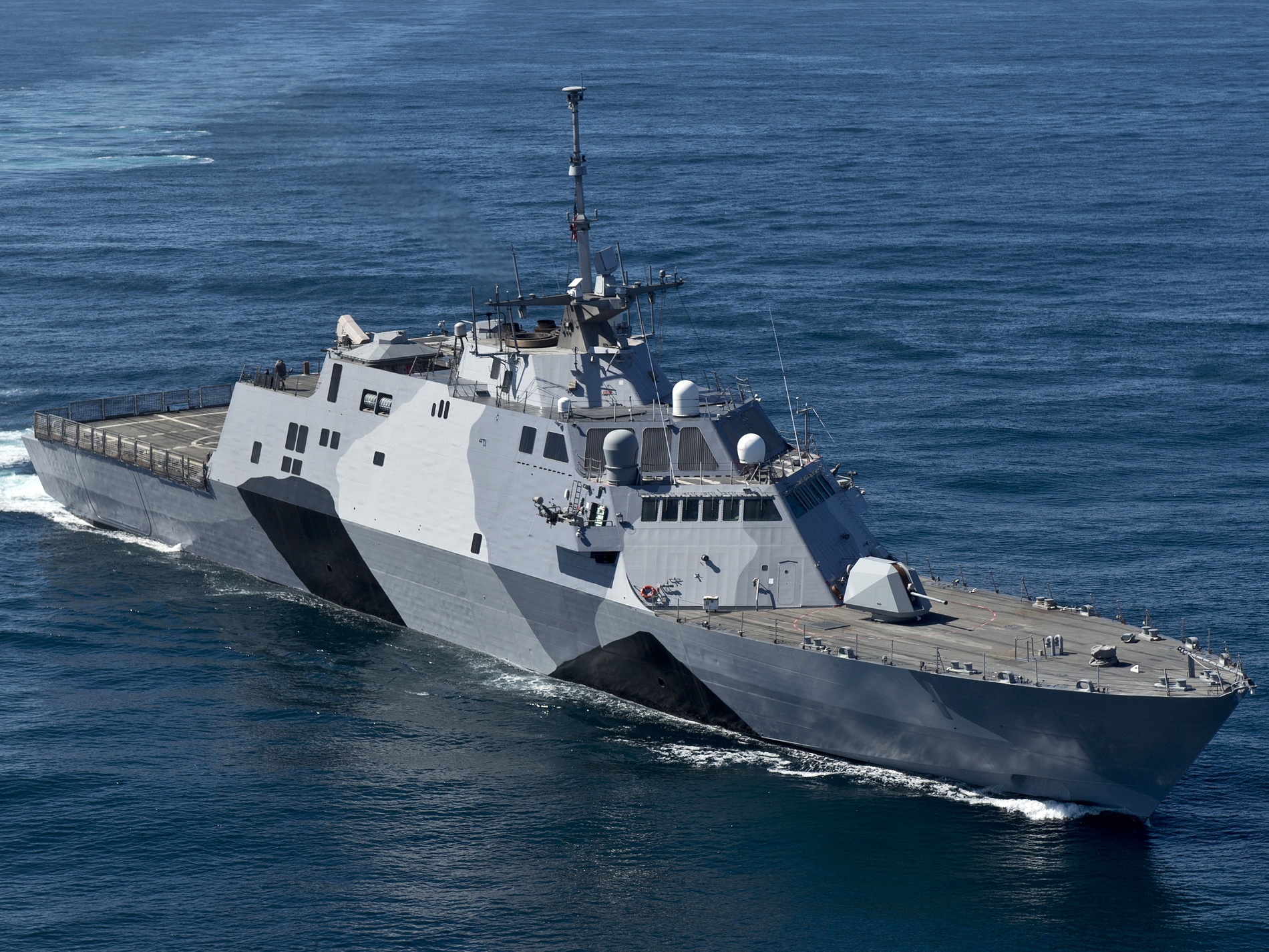The USS Sioux City (LCS 11), a Freedom-class littoral combat ship of the US Navy, has been deployed to the U.S. 6th Fleet’s area of operations, marking the first time an LCS has ever operated in European waters.
China Grows Suspicious Of US Air Force’s “Hypersonic Fighter Jet”; Turns Its Satellite To Check The Mirage
On May 5, the Navy’s Sixth Fleet, which is based in Italy and commands nearly all of the service’s operations in and around Europe and Africa, confirmed Sioux City’s arrival in its area of responsibility.
The deployment comes as the Navy prepares to decommission Sioux City and all of its other existing variants of this type of LCS due to the revelation of a severe design flaw.
In the latest deployment, the US Navy highlighted the Freedom class’ strengths, which included rapid speed, access to littoral waters, and the capacity to pick up routine taskings.

The LCS was designed to perform maritime security operations, joint exercises, and freedom of navigation patrols in order to free up larger surface combatants for high-end missions.
“Sioux City’s deployment allows us to integrate the LCS’ unique operational capability into our already diverse fleet,” said Vice Adm. Gene Black, commander of the U.S. Sixth Fleet.
“The agility of Littoral Combat Ships allows them to operate in both near-shore and open-ocean environments, enhancing our ability to provide security and stability across the European theater.”
Sioux City, according to the Navy, could be able to boost the availability of larger surface combatants in the theater.
“This deployment will expand the relevance of these ships [LCS], particularly their ability to relieve larger surface combatants in key surface-mission areas,” said Cmdr. Scott Whitworth, Sioux City’s commanding officer.
It’s uncertain when the ship left Naval Station Mayport in Florida. However, the Navy stealthily released photos showing it traveling in the Atlantic Ocean alongside the Arleigh Burke-class destroyer USS Paul Ignatius yesterday.

Sioux City is part of the Littoral Combat Ship Squadron Two (LCSRON 2). The ship will be equipped with two manned MH-60S Seahawk helicopters from the Sea Knights of Helicopter Sea Combat Squadron 22; however, it can also operate with one manned helo and one MQ-8 Fire Scout drone, according to the Navy.
Navy Looks To Retire All Freedom-Class LCS
Last year, the US Navy admitted that operating an LCS cost nearly as much as operating a much larger and more capable Arleigh Burke-class destroyer.
Meanwhile, the service recently told Congress in its FY2023 budget request that it wants to decommission nine Freedom-class LCS hulls before they reach the end of their anticipated service life, including the 2018-built USS Sioux City.
The plan would deactivate every currently operational hull in the class if it is not halted by Congress. The USS St. Louis, the newest ship on this list, was commissioned less than two years ago.
According to the Navy’s budget plan, the move would free up $50 million per ship per year for other priorities. However, it would also lower the size of the fleet, which has already been eclipsed in sheer numbers by China, which may prompt members of Congress to object.
The ship’s performance has disappointed the Navy. The most serious upset in the LCS program to date has been the propulsion system issue.
The Freedom-class ships have significant limitations and have experienced numerous breakdowns, including one that inflicted $23 million in damage to the littoral combat ship USS Forth Worth, exposing a critical design defect in its propulsion system.
It’s unclear whether Sioux City has gotten the solution for the class-wide propulsion system problem, which could impede these ships from reaching their top speed of 40 knots.

In November 2021, the Navy announced that the repair had been placed on its first Freedom-class ship, the future USS Minneapolis-St. Paul. In May, the warship will be formally commissioned into duty.
The Navy still has six more Freedom-class LCS hulls in various construction and fit-out phases, and it has not revealed any changes to its delivery plans. The decommissioning plan has no influence on the fleet of Independence-class LCS warships, which were built to a completely different design yet bear the “littoral combat ship” moniker.
The US Navy has had some moderate success with the Independence-class in recent years. This has included outfitting an increasing number of those ships with anti-ship cruise missiles known as Naval Strike Missiles (NSM), providing them with much-needed firepower, and extending their deployments in the Pacific region.
Both LCS classes have had their procurements cut short in favor of the new Constellation-class frigate, which has a traditional European hull design.
While this was the ship’s first and maybe final deployment to Europe, it did signal a key milestone in its service life before its possible early retirement.
- Contact the author at ashishmichel@gmail.com
- Follow EurAsian Times on Google News




